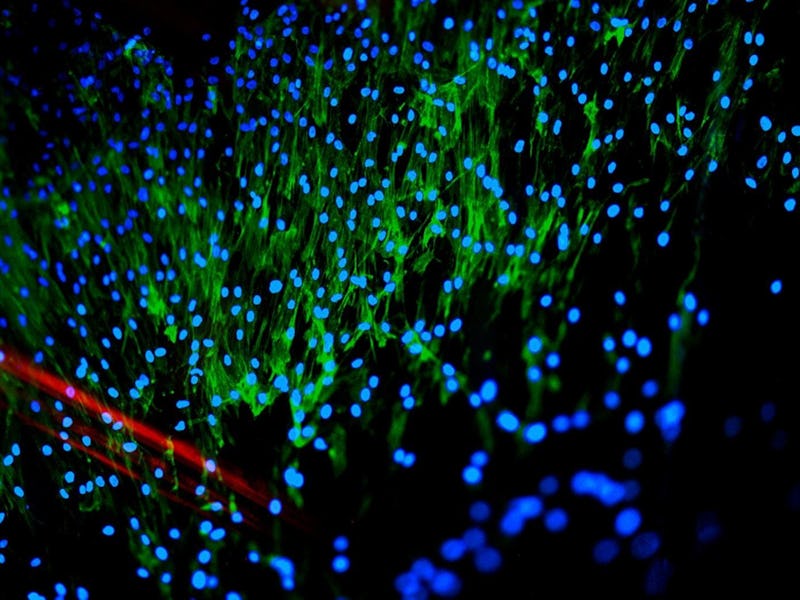New Cell Filming Technology Creates the World's Smallest Movies
Scientists can now watch molecules in realtime. And it's beautiful.

Any given moment, there are a thousand processes happening on the surface of any single living cell. Molecules are being put together; chemical bonds are being torn up; temperatures are rising and falling. Things are happening.
But these actions and reactions have always been easier to track via cumulative results than to actually watch. That is changing thanks to Thomas Kirchhausen of Harvard University and 2014 Nobel Prize in Chemistry winner Eric Betzig of the Howard Hughes Medical Institute. Together these researchers have been working to create an imaging technique to make the world’s smallest movies. And it’s allowing us to see the workings of cells like never before:
Kirchhausen’s and Betzig’s new genre is called Structured Illumination Microscopy, or SIM. And, as you can see in the video above, it is capable of showing the proteins actin and myosin, used by the body to coordinate and control muscle contractions and move cells and tissues to and fro. That video shows what human movement looks like on the smallest possible scale.
One of the big impediments to cellular research has been scientists’ inability to observe the movement and activity of cells in real-time. It’s easiest to study a cell as a dead stain. The best alternative involved tagging cells with fluorescent molecules to allow scientists to observe the parts better, but doing so exposed the cell to intense amounts of light, which is often harmful and sometimes lethal.
SIM can not just take cellular home movies, but it can do so without vaporizing the cell itself. The video below shows clathrin proteins in a control bubble formation used to transport materials between cells.
And below, you can see worlds collide as clathrin (in green) and actin (in red) interact in the same space in monkey kidney cells.
Obviously, the big hope is that SIM could help cellular biologists who know what cells do learn how cells work. But, in the meantime, SIM will tell small stories beautifully.